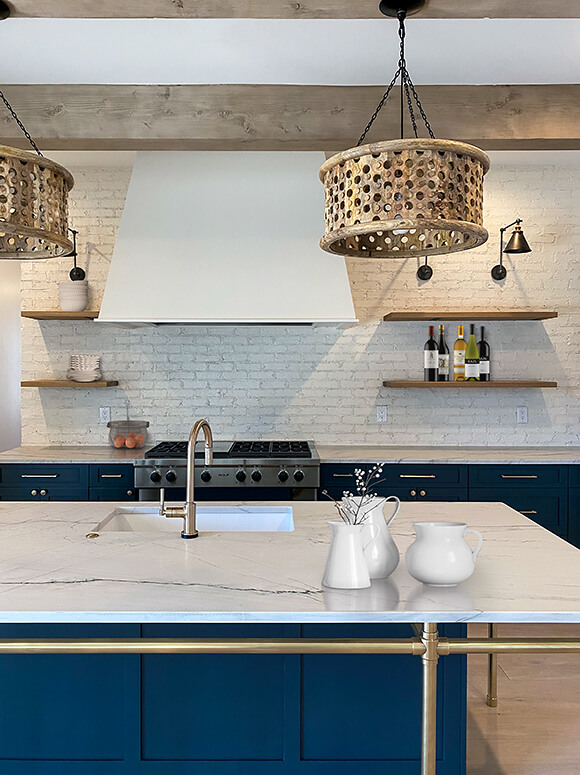An Overview to Picking the Perfect Legs For Kitchen Island for Your Home
Selecting the optimal legs for your kitchen area island is a nuanced decision that impacts both the functionality and visual allure of this main area. As you think about these aspects, it ends up being apparent that the right legs can transform not just the appearance of your kitchen area but additionally its use for years to come.

Comprehending Kitchen Island Legs
When choosing legs for a kitchen island, it's necessary to understand their useful and aesthetic roles in the general design. The legs function as a critical support system, making certain stability and toughness for the island, which frequently operates as a work space, dining location, or gathering area. The selection of product and construction technique must be robust sufficient to hold up against daily use and prospective wear.
Along with their architectural obligations, legs contribute considerably to the island's visual charm. They can boost the cooking area's design, whether via traditional, contemporary, or eclectic designs. The height and proportion of the legs are also vital factors to consider; they need to integrate with the island's kitchen counter elevation while making certain comfy seating for those making use of the room.
Moreover, the leg layout can affect the total circulation of the cooking area. Open, ventilated leg designs can produce a sense of lightness, while solid, substantial legs may share an extra based and stable visual - Legs For Kitchen Island. Recognizing these visual and practical elements will assist homeowners in making notified options that match their cooking area's layout and enhance its functionality
Popular Styles and Products
The choice of legs for a kitchen island includes a selection of popular styles and materials, each offering special features that can boost both capability and aesthetics. Standard legs normally exhibit ornate information and workmanship, boosting classic cooking area styles.

Elevation and Security Factors To Consider

The legs of the kitchen he said island ought to give appropriate assistance, ensuring that the structure can withstand daily usage without changing or tottering. Material option plays a significant role in stability; steel legs, for circumstances, often tend to offer greater toughness compared to wood.
Matching Your Kitchen Area Aesthetic
Picking the best legs for your cooking area island exceeds performance; it also plays a considerable function in the total visual of the area. When picking legs, take into consideration the layout style of your kitchen. For a contemporary look, streamlined steel or minimal designs can produce a tidy, modern ambiance. On the other hand, rustic or standard kitchens frequently take advantage of wooden legs with detailed outlining or a distressed surface, boosting warmth and character.
Color is an additional essential variable. Legs that match or comparison with additional resources your island's surface area and surrounding kitchen cabinetry can produce visual consistency or striking prime focus. Matching dark timber legs with a light marble kitchen counter can include deepness and interest. In addition, consider the coating of the legs; matte, shiny, or textured coatings can significantly influence the general feeling of the kitchen area.
Installment and Maintenance Tips
Mounting kitchen island legs requires careful attention to website here detail to make sure both security and visual allure. Make use of a stud finder to situate wall surface studs if you are affixing the legs to a wall surface or making use of braces for included assistance.
When safeguarding the legs, make use of high-quality screws and, if required, wood glue for additional toughness. For steel legs, make certain that you are making use of ideal supports and devices to stop damages to your floor covering. It is a good idea to look for levelness after setup, making modifications as needed to avoid tottering.
Tidy the legs with an appropriate cleaner, avoiding rough materials that might scratch the surface area. By following these installment and maintenance ideas, you can guarantee that your cooking area island legs stay both useful and visually enticing.
Final Thought
In verdict, choosing the suitable legs for a kitchen area island demands mindful factor to consider of height, stability, and aesthetic compatibility. Ultimately, thoughtful leg selection plays an important function in raising both the functionality and layout of the cooking area room.
When picking legs for a cooking area island, it's important to comprehend their practical and visual roles in the overall design. Open, ventilated leg designs can produce a sense of lightness, while strong, significant legs might communicate a much more grounded and secure visual. The legs of the kitchen area island ought to offer adequate assistance, making certain that the framework can stand up to everyday use without tottering or moving.Mounting kitchen area island legs requires mindful interest to detail to make sure both security and visual charm.In conclusion, choosing the ideal legs for a cooking area island necessitates mindful factor to consider of height, security, and aesthetic compatibility.